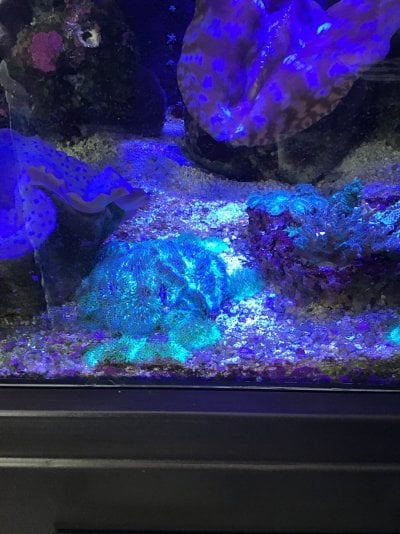Did you know that corals can walk? Well, they’re not pedestrians; they don’t grow legs and walk. But some corals do move around. But which ones and how?
Well-known (somewhat) is a walking dendro which has a symbiotic peanut worm (Sipunculid) that lives at the base. The worm moves around eating as it feeds in the substrate, moving the coral from place to place.
But what about our commonly kept corals? You buy a coral, put it in your tank - whether you glue it or throw it in the sand - but some of these don’t stay put. It can be frustrating. Are fish, hermits, flow or something else moving it around? Maybe. But perhaps that coral is moving itself.
A common coral called plate corals (fungia) have this ability to walk. They can inflate themselves by intaking water, then releasing water and thus moving themselves. I’ve found that they may do this more when covered with sand. They inflate to push the sand off. Then deflate and hence, moving home - or walking.

Also pictured is a slipper coral that walks from time to time.

One coral that has given me plenty of movement is a cynarina. It’s a very fat and fluffy coral. At night it deflates and sends out its feeding tentacles. I’d say it moves perhaps an inch or less per day in any direction.

Trachys also posses this ability to walk, whether it’s because of their cone shaped skeleton or not, I’m not sure. But one day it’s facing forth and the next day back.

All pics are taken by me and at night with lights out.
Well-known (somewhat) is a walking dendro which has a symbiotic peanut worm (Sipunculid) that lives at the base. The worm moves around eating as it feeds in the substrate, moving the coral from place to place.
But what about our commonly kept corals? You buy a coral, put it in your tank - whether you glue it or throw it in the sand - but some of these don’t stay put. It can be frustrating. Are fish, hermits, flow or something else moving it around? Maybe. But perhaps that coral is moving itself.
A common coral called plate corals (fungia) have this ability to walk. They can inflate themselves by intaking water, then releasing water and thus moving themselves. I’ve found that they may do this more when covered with sand. They inflate to push the sand off. Then deflate and hence, moving home - or walking.
Also pictured is a slipper coral that walks from time to time.
One coral that has given me plenty of movement is a cynarina. It’s a very fat and fluffy coral. At night it deflates and sends out its feeding tentacles. I’d say it moves perhaps an inch or less per day in any direction.
Trachys also posses this ability to walk, whether it’s because of their cone shaped skeleton or not, I’m not sure. But one day it’s facing forth and the next day back.
All pics are taken by me and at night with lights out.



















